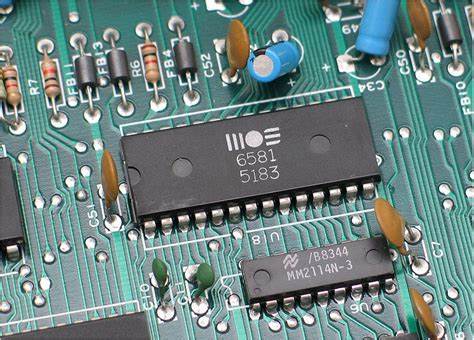* On your first PCB Assembly order!
* Up to $300 discount
 C - A L L E Y
C - A L L E Y 
Home | Events | PCB | About Us | News | Contact Us
Understanding the insertion of electronic components on a PCB (Printed Circuit Board) is crucial for electronic engineers. The process of inserting components is quite detailed and involves several key principles. This guide outlines the methods and requirements for the insertion of circuit board components.
The insertion of components is not just a procedural task; it significantly impacts both the organization and quality of the installation on the circuit board. Therefore, strict insertion guidelines must be followed.
Here are some key points to consider:
1. Insertion Order: Components should be inserted following the principle of "large first, small second; low first, high second; inside first, outside last." This order facilitates smoother installation.
2. Resistor Installation: When installing resistors horizontally, ensure that the mark number is facing upward and maintains a consistent direction. Low-power resistors can be positioned close to the PCB surface, while high-power resistors should be installed at least 2mm above the PCB to enhance heat dissipation.
3. Capacitor and Transistor Installation: For capacitors, transistors, and similar components installed in a vertical manner, lead wires should not be excessively long, as this can compromise stability. However, they should not be too short, as this could cause damage due to overheating during soldering. A typical distance of 2mm from the circuit board is advised, and it is crucial to verify the correct polarity for electrolytic capacitors and the pin configuration for transistors.
4. Component Arrangement: The components on the printed circuit board should be evenly distributed, neatly arranged, and aesthetically pleasing. They should not tilt, cross over, or overlap. Additionally, ensure that the component shells and leads do not make contact and maintain a certain distance from each other.

Installation Principle of PCB Components
Fundamental Principles of PCB Component Installation
For new electronic engineers, understanding the installation principles of PCB components may seem daunting. However, these principles can be grasped with a bit of guidance. Below are the essential installation principles for PCB components:
1. Each component must be arranged within the PCB, with each lead occupying a separate bonding pad.
2. Components should not cover the entire PCB; leave a 5 to 10mm margin around the edges. The PCB’s dimensions and fastening methods will dictate this margin.
3. Components should be laid out evenly and uniformly across the entire PCB.
4. Keep the installation height of components as low as possible to prevent them from falling over or creating short circuits with nearby components, which could lead to safety issues.
5. The axial position of larger components should be determined by the PCB's installation orientation within the system. The axes of regularly arranged components should align vertically to enhance stability.
6. The span at both ends of a component should be slightly longer than the component’s axial length. When bending pins, avoid bending them all the way; leave about 2mm to prevent damage.
7. The layout of components should not overlap vertically. Maintain a minimum spacing between adjacent components to ensure proper operation and safety.
By following these guidelines, engineers can ensure a high quality of PCB assembly, leading to better performance and reliability in electronic devices.
Why Choose China PCBA Supplier KSPCBA as Your Installation Principle of PCB Components Manufacturer?
– Experienced and skilled team
– State-of-the-art equipment
– Strict quality control
– Excellent customer service
– Competitive price

Please send Email to kspcba@c-alley.com or call us through +86 13828766801 Or submit your inquiry by online form. Please fill out below form and attach your manufacturing files( PCB Gerber files and BOM List) if need quotation. We will contact you shortly.
 +86 13828766801
+86 13828766801 kspcba@c-alley.com
kspcba@c-alley.com https://www.kingshengpcba.com/
https://www.kingshengpcba.com/ 2/F, Building 6, Tangtou 3rd Industrial Zone, Tangtou Community, Shiyan Town, Baoan District, Shenzhen, China, 518108
2/F, Building 6, Tangtou 3rd Industrial Zone, Tangtou Community, Shiyan Town, Baoan District, Shenzhen, China, 518108